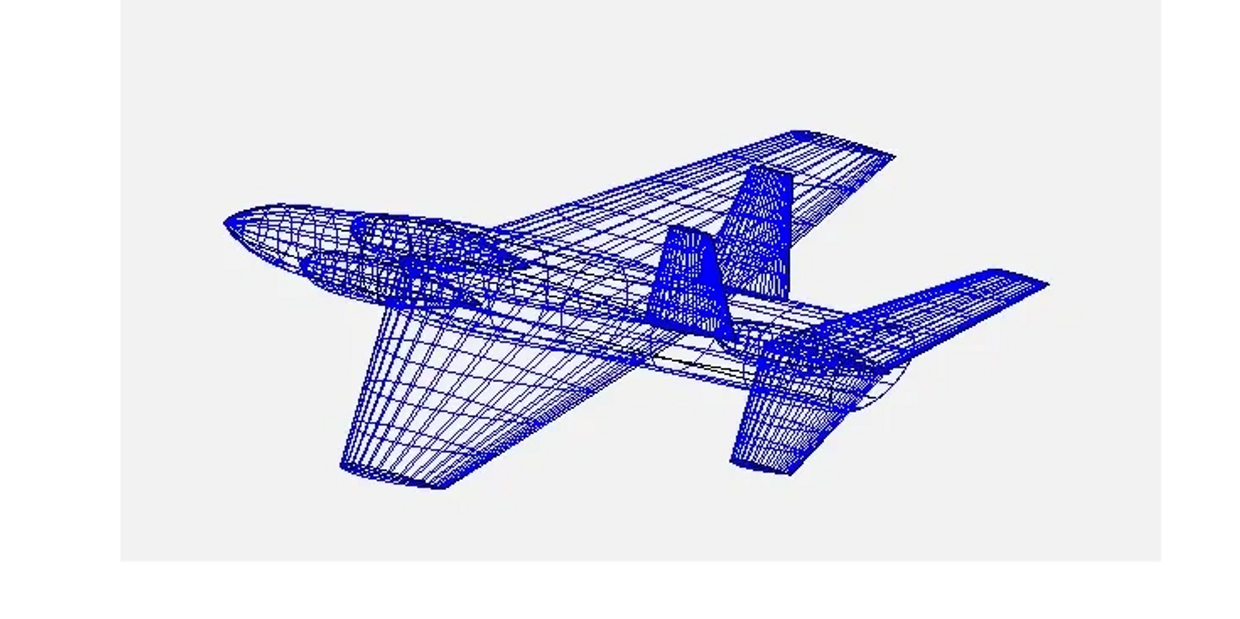OpenVSP Geometry Development for a Supersonic Fighter

Defined performance goals and used OpenVSP to create a conceptual fighter geometry built to meet desired speed, maneuverability, and structural requirements.
Project overview
As part of an Aerospace Design course, I set out to design a single-seat, supersonic, multi-role fighter that could operate under extreme flight conditions. Rather than beginning with an existing aircraft, I started by defining the mission requirements: a maximum speed of Mach 1.8 at 35,000 feet, a cruise speed of Mach 0.9, and the ability to withstand heavy G-loads in combat maneuvers.
Using these goals as constraints, I began developing a preliminary geometry that could meet them. The design draws inspiration from the F-35A and integrates a Pratt & Whitney F135-PW-100 engine, known for its thrust and efficiency. At this stage, the model represents a proof-of-concept geometry that I will refine and analyze further to evaluate aerodynamic performance and structural feasibility.

Aerodynamic Simulation – VSPAERO Analysis
Displayed are aerodynamic load distribution and coefficient plots for the single-seat multi-role fighter concept. The left side depicts the aircraft geometry in VSPAERO, with the wing, tail, and fuselage modeled for aerodynamic simulation. Each colored mesh represents a lifting surface used to calculate pressure and lift coefficients across spanwise sections.
On the right, the graph displays the spanwise lift coefficient distribution (Cl × c / c_ref) under various angles of attack. Each colored curve represents a different flight condition, illustrating how lift varies along the wing span as the angle of attack increases.
These results help evaluate aerodynamic efficiency, stability, and load balance, confirming that the design meets its performance goals for climb rate, maneuverability, and supersonic flight.
This website uses cookies.
We use cookies to analyze website traffic and optimize your website experience. By accepting our use of cookies, your data will be aggregated with all other user data.